OpenStack works ... so now what?
Monty Taylor
http://inaugust.com/talks/now-what.html
twitter: @e_monty
Who am I?

Distinguished Technologist
HP Cloud
Who am I?
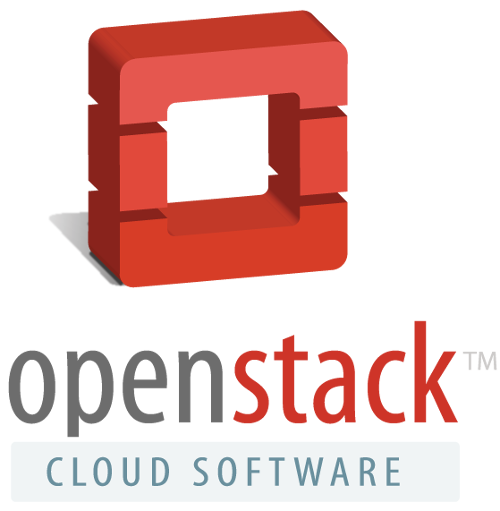
Technical Committee
Foundation Board of Directors
Developer Infrastructure Core Team
What are we going to talk about?
- OpenStack
- My application
- Your applications

As an application developer,
I want to deploy and run an application on the internet
so that my customers all over the world can consume it.
As an application developer,
I want to deploy the application across multiple clouds
so that my service survives issues in any one of them.
THIS WORKS
I'm doing it myself as we speak
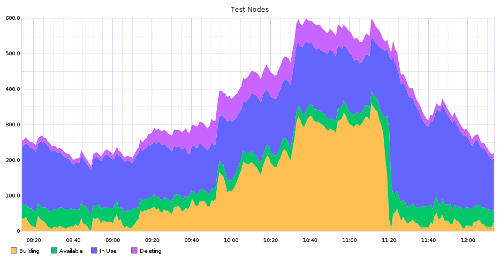
10-20k VMs per-day
3 (soon to be 6) clouds
Only using OpenStack APIs
OpenStack Infra
Tooling, Automation and CI for OpenStack Project
2000 Developers
Gated Commits
Every commit is fully integration tested (twice) before landing
Each Test Runs on a Single Use Cloud Slave
This is that "cloud scale out" part
1.7 Million Test Jobs in the last 6 Months
15 Million Tests in a month
18 Terabytes of Log Data in six months
We have no servers
It all runs across HP and Rackspace Public Clouds.
Architecture
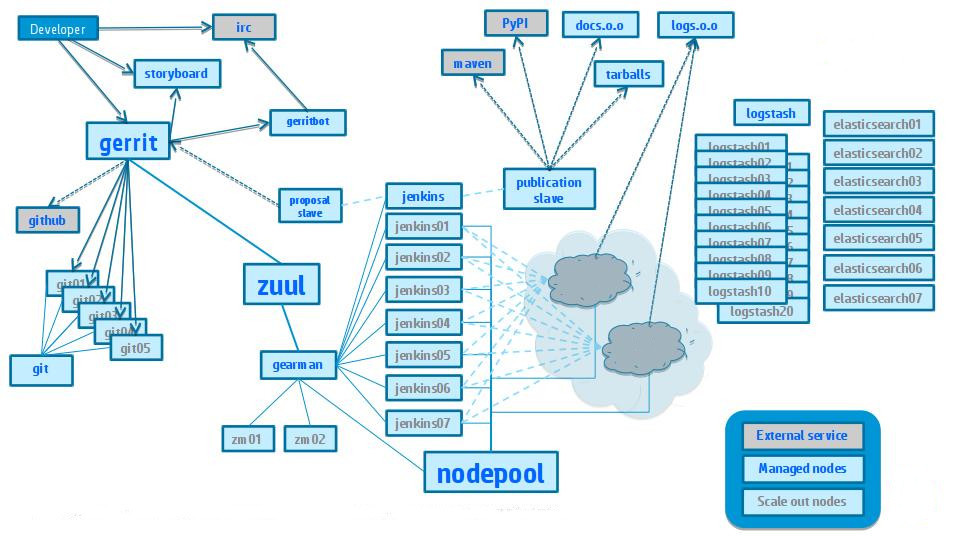
Gerrit
- Traditional 'Enterprise' Java Application
- Single Nova VM, Cinder Volume
- Scale out farm of git replicas
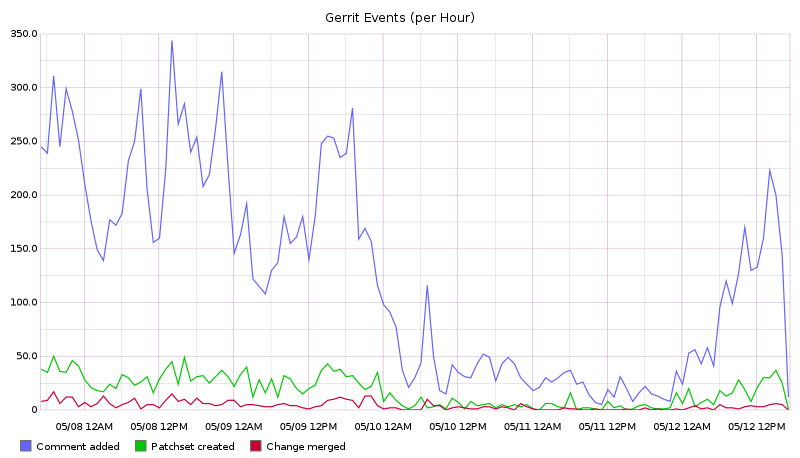
Fun Numbers
- 2500 changes every week
- 15000 change revisions every week
- 10,000 new changes every 42 days
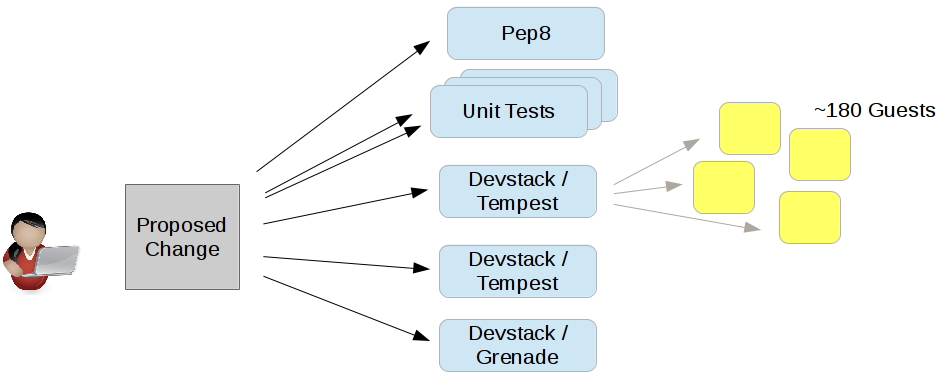
nodepool
- Cloud Native
- Purpose built in Python
- Keeps a pool of ready to go nodes
- Multi-cloud
- Fully elastic - responds to demand

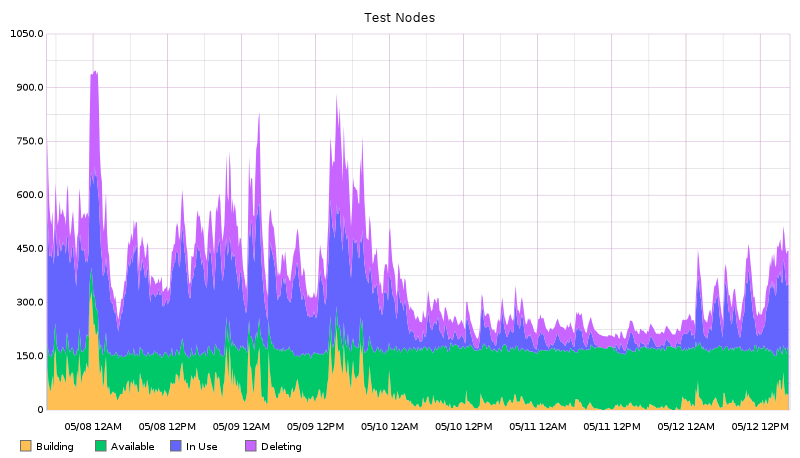
OpenStack Works!
What next?
Make it easier
Basic things you want to do
Get (make/fetch/find) a base image
Upload it to each cloud
Boot a VM on one or more of the clouds
Ensure it's on the Internet
We've made this harder than it should be
Get a base image
OpenStack diskimage-builder
packer
Download pre-built image from Ubuntu/RedHat/SuSE
Problem: hypervisor image file format
- Rackspace uses VHD
- HP uses qcow2
- DreamHost uses RAW
Problem: image API version
- HP uses v1
- vexxhost uses v2
Good news! We made a plan for this at the summit
Problem: image task vs. PUT
swift upload --object-name local-image-filename images image-name
glance task-create
--type=import
--input='{"import_from": "images/image-name",
"image_properties" : {"name": "My Image Name"}}'
glance image-create --name=image-name --file=local-image-filename
Problem: Ensure it's on the Internet
- Cloud has externally routable IP from neutron (RunAbove, OVH)
- Cloud has externally routable IP neutron AND supports optional private tenant networks (vexxhost)
- Cloud has private tenant network provided by neutron and requires floating IP (HP, Dreamhost)
- Cloud only has private tenant network provided by nova-network and requires floating-ip for external routing (auro)
- Cloud has externally routable IP from neutron but no neutron APIs (Rackspace)
Maybe in code ...
def get_server_external_ipv4(cloud, server):
if cloud.has_service('network'):
try:
server_ports = cloud.search_ports(
filters={'device_id': server.id})
ext_nets = cloud.search_networks(filters={'router:external': True})
except NeutronClientException as e:
pass # fall through
else:
for net in ext_nets:
for port in server_ports:
if net['id'] == port['network_id']:
for ip in port['fixed_ips']:
if _utils.is_ipv4(ip['ip_address']):
return ip['ip_address']
ext_ip = get_server_ip(server, key_name='public')
if ext_ip is not None:
return ext_ip
for interfaces in server.addresses.values():
for interface in interfaces:
if _utils.is_ipv4(interface['addr']) and \
_utils.is_globally_routable_ipv4(interface['addr']):
return interface['addr']
return None
I think we can do better than that
What am I doing about it?
os-client-config
http://git.openstack.org/cgit/openstack/os-client-config
A library to handle config information for openstack clients
Tracks differences in vendors that can't be discovered
In use in python-openstackclient and ansible
os-client-config
~/.config/openstack/clouds.yaml
clouds:
hp-mordred:
profile: hp
auth:
username: mordred@inaugust.com
password: XXXXXXXXXXXXX
project_name: mordred@inaugust.com
region_name: region-b.geo-1
dreamhost:
profile: dreamhost
auth:
username: montay6
project_name: dhc2111978
password: XXXXXXXXXXXXX
region_name: RegionOne
shade
http://git.openstack.org/cgit/openstack-infra/shade
A library to wrap business logic around client libraries
cloud.create_image('image-name', filename='image-filename.qcow2')
cloud.create_server('my-server', image='immage-name', auto_ip=True)
In use in Infra Nodepool and ansible
ansible
Brand new modules, based on shade
Coming in 2.0 release
- os_keypair:
cloud: hp-mordred
name: mordred
public_key_file: ~/.ssh/id_rsa.pub
- os_image:
cloud: hp-mordred
name: Monty Ubuntu
file: ubuntu.vhd
- os_server:
cloud: hp-mordred
name: my-server
flavor_ram: 1024
image: Monty Ubuntu
ansible
multi-cloud support
- os_keypair:
cloud: "{{ item }"
name: mordred
public_key_file: ~/.ssh/id_rsa.pub
with-items:
- vexxhost
- rackspace
- mordred-hp
- ovh
What should we do about it?
- Get back to basics
- shade existence is a bug
- Make some decisions about divergences in the basic levels
- Take a stand even if one of our product managers disagrees
- Ensure that simple things are simple
Thank you!
http://inaugust.com/talks/now-what.html
twitter: @e_monty

Licensed under a Creative Commons Attribution 4.0 International License .
Source code available at https://opendev.org/inaugust/inaugust.com